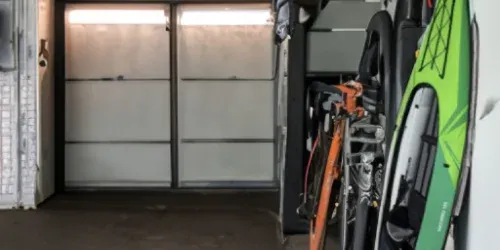Inflatable kayaks have surged in popularity among outdoor enthusiasts and casual paddlers alike. Their portability and ease of storage make them an attractive option for those with limited space or those who like to travel. However, one question often arises: Do inflatable kayaks leak? This article will delve into the durability of inflatable kayaks, maintenance tips, and how to ensure your kayak remains seaworthy.
Key Takeaways:
- Inflatable kayaks are designed with durability in mind, but they can leak if not properly maintained or used.
- Direct sunlight and improper storage can contribute to the degradation of an inflatable boat, leading to leaks.
- Regular inspection and proper care can significantly reduce the risk of your inflatable kayak developing leaks.


The Construction of Inflatable Kayaks
Most inflatable kayaks are constructed with robust materials such as PVC, Nitrylon, or Hypalon. These materials are chosen for their resistance to punctures and abrasions, which are common concerns when navigating various water bodies. The design of most inflatable kayaks includes multiple air chambers, which not only contribute to the buoyancy and stability of the kayak but also serve as a safety feature. If one chamber is compromised, the others can keep the kayak afloat.
Are Leaks a Common Issue?
The question of whether inflatable kayaks leak is not a simple yes or no. While most inflatable kayaks are designed to be tough and withstand a fair amount of abuse, they are not indestructible. Sharp objects, rough handling, and prolonged exposure to elements can lead to wear and tear that may result in leaks. However, with proper care and maintenance, the likelihood of experiencing a leak can be greatly minimized.
The Impact of Direct Sunlight
Direct sunlight can be one of the biggest adversaries of an inflatable boat. UV rays can weaken the material over time, making it more susceptible to damage and leaks. It's essential to protect your kayak from prolonged exposure to the sun when not in use. Using a UV protectant spray or storing your inflatable kayak in a shaded area can help mitigate the damaging effects of the sun.
Proper Inflation: Key to Preventing Leaks
Ensuring that your kayak is inflated to the correct pressure is crucial. An under-inflated boat can sag and drag on the water, increasing the risk of snags and punctures. Conversely, an over-inflated kayak can become rigid and more prone to damage from impacts. Most inflatable kayaks come with a recommended PSI, and using a pressure gauge can help you keep your kayak properly inflated for optimal performance and longevity.
Fresh Water vs. Salt Water Usage
Fresh water is generally kinder to inflatable kayaks than salt water. Salt can corrode metal components and degrade the material of the kayak over time. After paddling in salt water, it's important to rinse your inflatable kayak with fresh water to remove any salt residue. This simple step can go a long way in preventing leaks and extending the life of your kayak.
Storage and Care
How you store your inflatable kayak when it's not in use can significantly affect its condition. It should be cleaned, dried, and stored in a cool, dry place away from direct sunlight. Proper storage prevents the growth of mold and mildew and protects the material from UV damage. Additionally, keeping your kayak inflated to a low pressure during storage can help maintain its shape and prevent creases that could lead to weak spots.

Regular Inspection and Maintenance
Before and after each use, inspect your kayak for any signs of wear, such as abrasions or seams coming apart. Pay special attention to the areas around valves and seams, as these are common spots for leaks to develop. If you do find a leak, most inflatable kayaks come with a repair kit that can be used to patch small punctures effectively.
Handling and Usage Best Practices
How you handle your kayak can also influence its susceptibility to leaks. Dragging the kayak over rough surfaces or sharp rocks can cause punctures. It's best to carry your kayak to and from the water and to be mindful of underwater obstacles while paddling. Proper handling will not only prevent leaks but also ensure that your kayak performs well for years to come.
When to Seek Professional Repair
If you encounter a leak that is too large for a standard repair kit or if the damage is in a difficult-to-reach area, it may be time to seek professional repair. Some outdoor retailers offer repair services, or you may find a local specialist who can handle more complex issues with your inflated boat.
The Verdict on Inflatable Kayak Durability
Inflatable kayaks are designed to be durable and long-lasting. While they can leak, such instances are not a given and often result from neglect or improper use. By following the guidelines for care and maintenance, you can enjoy countless adventures on the water with minimal concerns about leaks.

Summary
In conclusion, while inflatable kayaks can leak, it is not an inherent flaw in their design. With proper care, storage, and usage, you can significantly reduce the risk of leaks. Regular maintenance, protection from direct sunlight, and careful handling are key to ensuring the longevity of your inflatable kayak. By taking these precautions, you can enjoy the convenience and fun of an inflatable kayak without the worry.

FAQs
How often should I check my inflatable kayak for leaks?
It's a good practice to inspect your kayak for potential leaks before and after each use. This way, you can address any issues promptly and prevent them from worsening.
Can I leave my inflatable kayak inflated all the time?
It's not recommended to leave your kayak inflated to full pressure when not in use, as this can stress the material. However, keeping it partially inflated can help maintain its shape.
What should I do if my inflatable kayak gets a leak while I'm on the water?
If your kayak starts to leak while you're on the water, try to get to shore as safely and quickly as possible. Once on land, you can use your repair kit to patch the leak temporarily until you can perform a more permanent fix.
Related articles:











